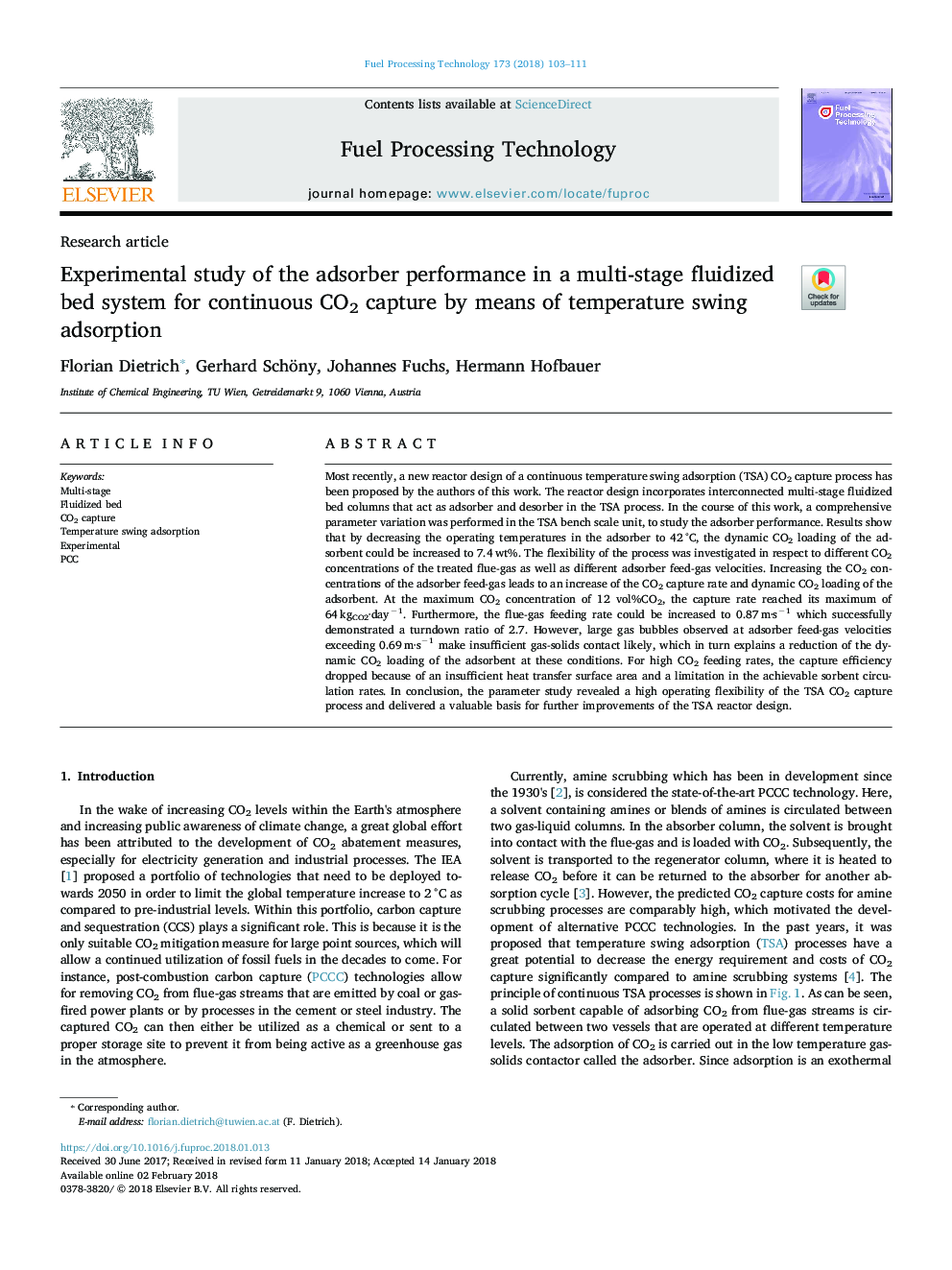| Article ID | Journal | Published Year | Pages | File Type |
|---|---|---|---|---|
| 6656433 | Fuel Processing Technology | 2018 | 9 Pages |
Abstract
Most recently, a new reactor design of a continuous temperature swing adsorption (TSA) CO2 capture process has been proposed by the authors of this work. The reactor design incorporates interconnected multi-stage fluidized bed columns that act as adsorber and desorber in the TSA process. In the course of this work, a comprehensive parameter variation was performed in the TSA bench scale unit, to study the adsorber performance. Results show that by decreasing the operating temperatures in the adsorber to 42â¯Â°C, the dynamic CO2 loading of the adsorbent could be increased to 7.4â¯wt%. The flexibility of the process was investigated in respect to different CO2 concentrations of the treated flue-gas as well as different adsorber feed-gas velocities. Increasing the CO2 concentrations of the adsorber feed-gas leads to an increase of the CO2 capture rate and dynamic CO2 loading of the adsorbent. At the maximum CO2 concentration of 12 vol%CO2, the capture rate reached its maximum of 64â¯kgCO2·dayâ1. Furthermore, the flue-gas feeding rate could be increased to 0.87â¯m·sâ1 which successfully demonstrated a turndown ratio of 2.7. However, large gas bubbles observed at adsorber feed-gas velocities exceeding 0.69â¯m·sâ1 make insufficient gas-solids contact likely, which in turn explains a reduction of the dynamic CO2 loading of the adsorbent at these conditions. For high CO2 feeding rates, the capture efficiency dropped because of an insufficient heat transfer surface area and a limitation in the achievable sorbent circulation rates. In conclusion, the parameter study revealed a high operating flexibility of the TSA CO2 capture process and delivered a valuable basis for further improvements of the TSA reactor design.
Related Topics
Physical Sciences and Engineering
Chemical Engineering
Chemical Engineering (General)
Authors
Florian Dietrich, Gerhard Schöny, Johannes Fuchs, Hermann Hofbauer,
